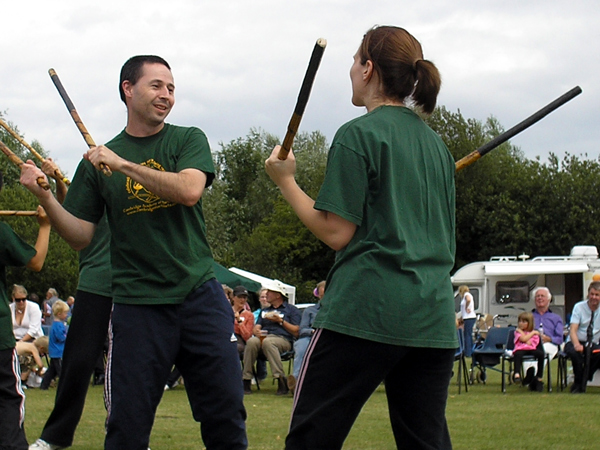The Arts
There are no articles in this category. If subcategories display on this page, they may have articles.
Subcategories
Korean Martial Arts
According to Marc Tedeschi, in his mighty volume, Hapkido • Traditions • Philosophy • Technique, "The history of the martial arts is essentially an oral tradition. Very little was actually written down until recent times. When we examine a broad range of martial arts, it becomes quickly evident that much of their history is contradictory. It is not uncommon to find a particular martial art tracing its roots to the "dawn of time." Specific histories are often touted as fact when they may be little more than anecdotes, or a loose collection of unsubstantiated myths." This is especially true of Korean martial arts considering that the country is so closely flanked by China and Japan.
Tedeschi claims that the Korean peninsula was first inhabited by nomadic tribes from China, around 30,000 BC. He also says that the descendants of those nomadic people were almost certainly influenced by contact with the Chinese who established outposts in Korea from around 108 BC. Constant wars between the two countries later led to the founding of three Kingdoms in Korea: Koguryo, Silla, and Paekche, from 18 BC. The Three Kingdom Period lasted for nearly 700 years, before they were unified in AD 668. During the Three Kingdom Period it is said that there was much cross-cultural contact and exchange between Korea, China and Japan. It is highly likely, therefore, that the traditions, culture and martial arts practice in each country, also influenced one another to some extent.
Members may download a copy of our Korean Martial Arts syllabus in the downloads section of our website.
Filipino Martial Arts
The Filipino Martial Arts (often referred to as, Eskrima, Kali or Arnis) are made up of tribal, village and family arts, and they are a reflection of the history and multi-racial society from which they come. They include an uncountable number of individual systems, and personal styles of fighting, that have been developed over several centuries.
Whilst much of our Filipino Martial Arts training is based on a synthesised blend of those ancient arts, we do, however, also teach one specific system - the world famous 1932 Doce Pares Multi-style system.
As a method of close-quarter fighting, Filipino Martial Arts are hard to beat. The principles of combat are based on understanding angles of attack and defence - whether the weapon used be a knife, bottle, machete, stick, or the empty hand. Training, therefore, includes all aspects of empty-hand and weaponry-based skills.
Eskrima full-contact stick fighting contests are fast and furious, and demand exceptional levels of physical fitness and conditioning - not to everyone's taste, but there if someone wants it.
Another benefit of the Filipino Martial Arts is that they can be studied by young, old, able-bodied and disabled people alike.
Savate Kickboxing
Savate (pronounced sa-vat) combines effective hand strikes and dynamic kicks, and was a demonstration sport in the Paris Olympic Games in 1924. These classes concentrate on kicking and punching skills, mobility and defence. You can build up your fitness and progress at your own pace. We include 'sparring skills' for anyone who would like to learn to spar, as well as sparring sessions for intermediate and advanced students. Several members of the Academy have represented Great Britain in European and World Championship competitions. In addition, we offer classes in Savate's sister art: Canne de Combat, which is a traditional French stick fighting art consisting of striking techniques, blocks, feints and combinations. It is a long range, graceful art, involving stylish striking and athletic movement. In all free play (sparring) and in competition, padded clothing, gloves and headguards are worn.
Integrated Fighting Arts
Canne de Combat
Canne de Combat is a traditional French stick fighting art consisting of striking techniques, blocks, feints and combinations. It is a long range, graceful art, involving stylish striking and athletic movement. In all free play (sparring) and in competition, padded clothing, gloves and headguards are worn. You can build up your fitness and progress at your own pace. We include 'sparring skills' for anyone who would like to learn to spar, as well as sparring sessions for intermediate and advanced students. Several members of the Academy have represented Great Britain in European and World Championship competitions.
Canne de Combat is a sister art of Savate (pronounced sa-vat) which uses effective hand strikes and dynamic kicks, and was a demonstration sport in the Paris Olympic Games in 1924. The skills of Canne and Savate are sometimes combined in the form of Canne Chausson.

